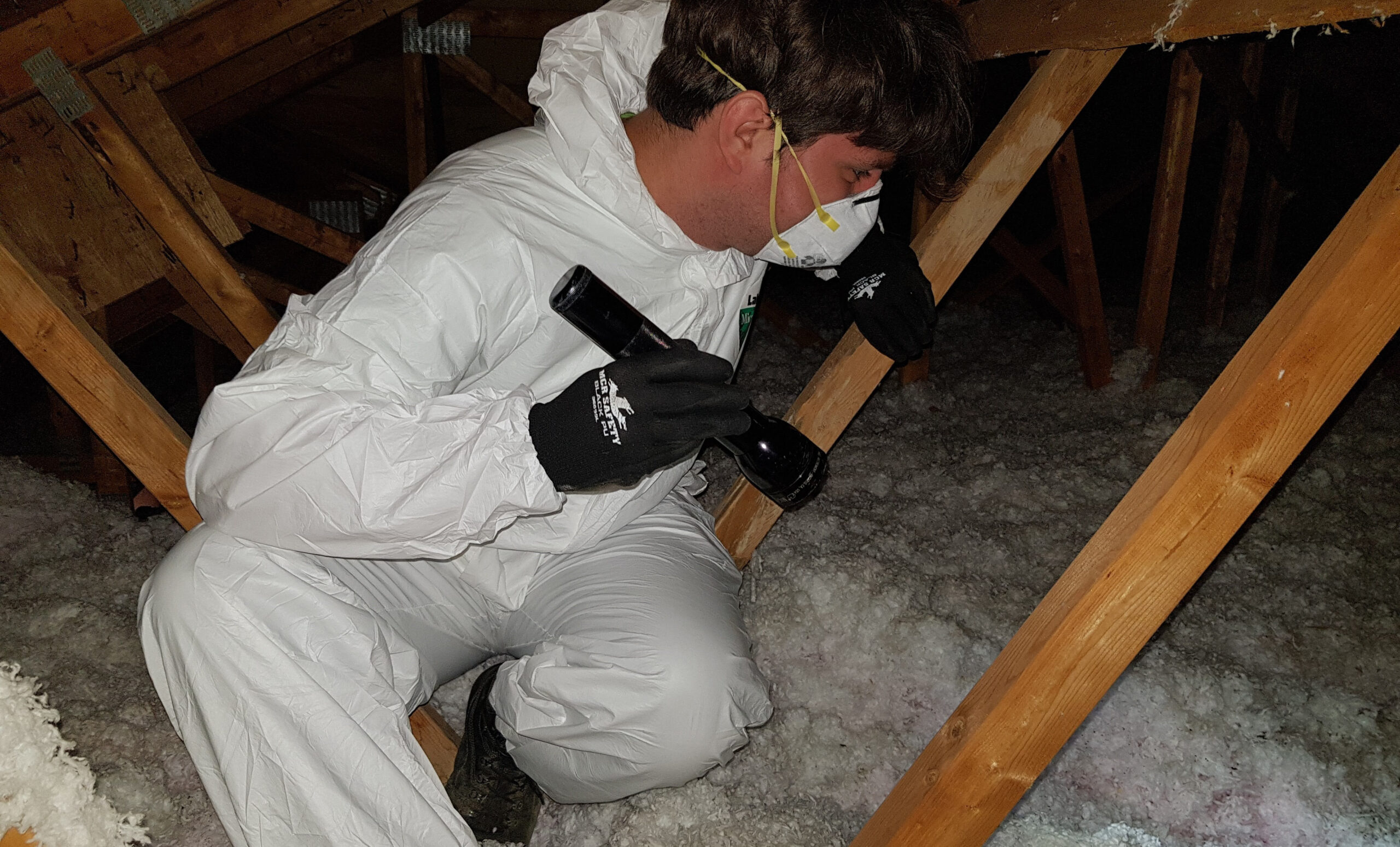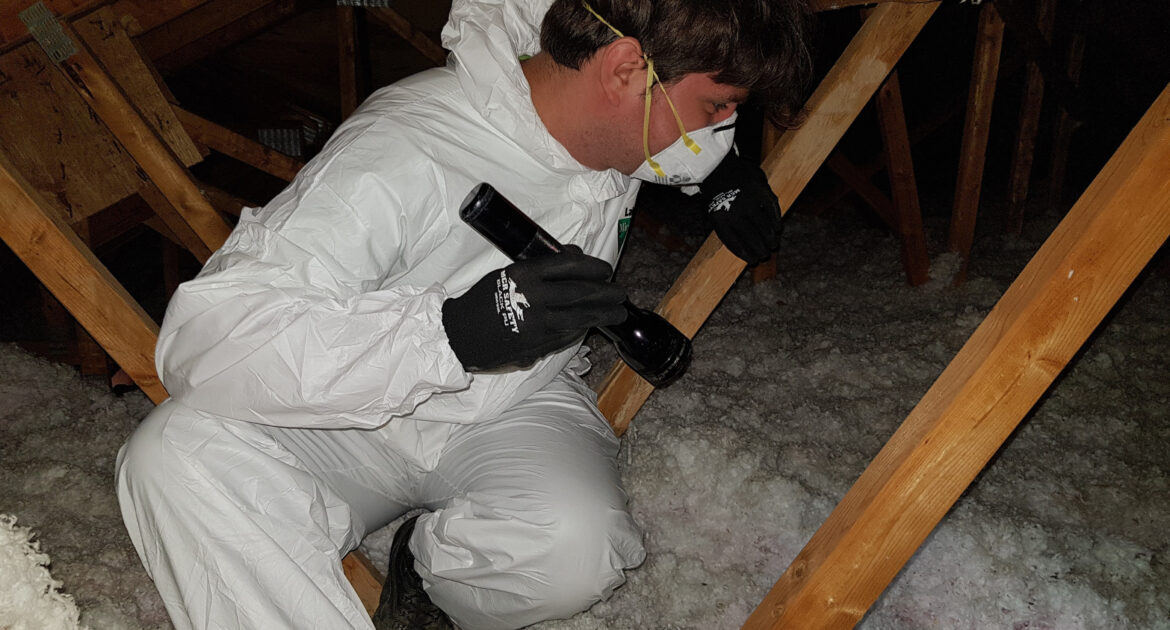Hearing strange scratching noises in your walls or attic? Maybe you’ve spotted small droppings on the floor or noticed a weird smell you can’t quite place. These could be clear signs of wildlife infestation indoors. Animals like squirrels, raccoons, and mice often sneak into homes searching for warmth and safety, leaving behind clues that can help you figure out if they’ve moved in.
To identify evidence of wildlife in your home, look for things like chewed wires, damaged walls, or even smudge marks along baseboards. Droppings and tracks are also major indicators that animals are hiding in your house. Spotting these signs early can save you a lot of trouble down the road. Thankfully, Skedaddle Humane Wildlife Control specializes in wildlife removal in Vinings and can handle these pesky problems safely and quickly.
This post will guide you through the most common signs of wildlife in your home, the areas to check, why DIY removal doesn’t work, and how to protect your home in the future. Keep reading to learn how you can stay a step ahead of unwanted animal guests.
7 Common Signs of Wildlife Infestation Indoors
Animals often leave behind plenty of evidence when they find their way into your home. Recognizing these signs early can help you address wildlife problems before they get worse.
-
Unusual Sounds
Strange noises in walls, attics, or ceilings are often the first clue that animals are inside. You might hear scratching as rodents scurry to find food or dragging noises as larger animals like raccoons move around. At night, when your home is quiet, these sounds can get more noticeable.
Birds nesting indoors often bring chirping or flapping noises, especially during early morning hours. Each type of wildlife creates its unique set of noises, helping to suggest what animal might be inside. If you hear these sounds frequently, it’s a clear sign that wildlife has settled into your home.
-
Droppings and Urine Odors
One of the most obvious signs of an infestation is finding droppings. Rodents leave behind small, dark pellets, usually near food sources or along baseboards, while raccoon droppings are much larger and often found near attic floors or entry points.
The smell of urine can linger in enclosed spaces, such as basements, crawl spaces, or storage areas, especially if animals have been present for a while. Identifying animal tracks and droppings at home doesn’t just confirm an infestation but can also give insight into the type of wildlife you’re dealing with. Consistent odors and droppings are signs that it’s time to take action.
-
Gnaw Marks
Chewing marks are a sign that animals, particularly rodents or squirrels, are nearby. These animals have teeth that continuously grow, so they chew on wires, wooden beams, and even furniture to keep them manageable. You might notice tooth marks on food packaging in your pantry or frayed electrical wires in low-traffic areas like attics and basements.
This habit isn’t just destructive; it’s a safety risk since chewed wires can lead to electrical fires. Carefully inspect for gnaw marks if you suspect wildlife in your home, especially in places where damage may not be immediately visible.
-
Nests or Material Piles
Wildlife creates nests using whatever materials they can find inside your home. This often includes gathered twigs, leaves, shredded insulation, or even pieces of fabric or paper. These nests are usually tucked away in hidden corners, attics, chimneys, or vents to give animals a quiet, undisturbed spot to raise their young.
If you uncover a pile of debris that seems out of place, it could very likely be a makeshift nest. Raccoons and squirrels, in particular, are known for making large nests that are hard to miss once you find them. Nests are one of the clearest signs that animals view your house as their home.
-
Grease or Smudge Marks
Animals that frequently travel the same paths within your home often leave behind greasy smudges or streaks. These marks come from the oils in their fur and are commonly seen along wall edges, baseboards, or tight passages they regularly use.
Rats, more than many other types of wildlife, are known for these oily trails, which can also help you pinpoint their movement patterns. These streaks tend to be most visible in low-light areas or near entry points like small holes in walls. If you spot these smudges, it’s a reliable indicator of repeated activity by wildlife.
-
Entry Point Damage
Wildlife doesn’t just sneak into homes; it often forces its way in, leaving physical damage behind. Common entry points include roof vents, attic screens, or gaps between the siding and the foundation. Larger animals like raccoons are capable of tearing through mesh or widening small holes to create access.
Damaged shingles, scratches near windows, or torn screens can also signal entry points. These spots should be carefully sealed once identified to avoid further trouble, but it’s crucial not to fix them while animals are still inside, as it could trap them indoors and worsen the problem.
-
Footprints or Tracks
Footprints are another excellent clue that wildlife may have invaded your home. Dusty corners in the attic, muddy spots near a basement entrance, or soft dirt by windowsills often hold tracks that animals leave behind. Each type of wildlife creates unique prints, so identifying animal tracks and droppings at home can give you a pretty good idea of what species you’re dealing with.
For example, raccoons leave behind hand-like prints, while rodents’ tracks are much smaller and concentrated. Looking for tracks can also help locate the most frequently used pathways animals take inside your home, making it easier to address the issue effectively.
By becoming familiar with these clues and keeping an eye out for them, you’ll be better equipped to spot a wildlife infestation early. Catching the problem quickly means protecting your home from more significant damage and ensuring wildlife doesn’t take up permanent residence.
Areas Where Signs Are Most Common
Wildlife can sneak into many parts of your home, but some areas are more vulnerable than others. Here’s where you’re most likely to spot evidence:
- Attic: Animals like squirrels, bats, and raccoons often make homes in attics because they’re quiet and away from humans.
- Basement or Crawl Space: Rodents, skunks, and other animals love the protection offered by a dark, damp basement or crawl space.
- Kitchen and Pantry: If food sources are accessible, mice and rats can leave droppings and chew marks here.
- Chimney: Birds, bats, and raccoons are common visitors to unchecked chimneys.
- Garage: Open doors and clutter create the perfect space for animals to sneak in.
Preventing Wildlife from Entering Your Home
Once you’ve dealt with the problem, prevention is key to keeping animals from returning. Consider taking these steps:
- Seal Entry Points: Repair holes in roofs, siding, and vents to block wildlife from getting inside.
- Install Chimney Caps: Keep birds, squirrels, and raccoons out by capping your chimney.
- Keep Food Sealed: Store pantry items in airtight containers, and don’t leave pet food out overnight.
- Trim Trees and Shrubs: Overhanging branches or dense shrubs can act as a bridge for animals looking to enter your home.
- Clean Up Outdoor Areas: Remove debris, garbage, and clutter from your yard to reduce nesting opportunities.
When to Call for Help
If you notice any signs of a wildlife infestation indoors, it’s time to act fast. Waiting too long can lead to problems like:
- Structural damage caused by chewing and nesting.
- Contamination from droppings and urine.
- Fire hazards from gnawed electrical wires.
Wild animals don’t just pose risks to your home but can also endanger your family through bites, scratches, or disease exposure. Our professionals at Skedaddle Humane Wildlife Control in Vinings know exactly how to manage wildlife safely and effectively.
Don’t ignore the signs of a wildlife issue in your home. Whether you’ve noticed strange noises, found droppings, or spotted odd damage, professionals can help you take back your space. We offer expertise in humane removal using one-way doors that allow animals to leave but prevent their return. Request an estimate today and let their trained team resolve the problem and protect your home for good.




